“Aletheia” as “disclosure” of the living paradigms as terms for understanding and research of the individual and humans condition. The sufferance, the transformation, the memory and the breath between life and death. Sculptures of silence, between violence, shame and sacrality, they are digging up uterine memories and ancestral fears, and their destroyed elements took shape through a dialogue that leads them into unusual, lonely, fragile, violet figure. They are metaphors of pain, visions of the archetypical imaginary, that are suspended in the indeterminacy limbo that leaves the spectators a sense of empty space, vacuum, awkwardness, vulnerability and solitude.
Fabio Mauri subjected thirty-three electroshocks after the atrocious events of the Second World War. These events destabilized what most simple in a man’s interrogative thought could be: the cause of pain. He spent his entire life and artistic research asking himself about the origin of it and the concept of trauma. For an atonement through the artistic creation, in order to beg the intolerable, to alleviate and bear the dramatic, maybe tragic, nature of the world.
The eyes sensibility of whom conserve the past, that transform the pain into a vital nymph, quite essential to recognize ourselves. Her memories that are bonded to a past are deeply vivid: they’re suffering and researching the possibility to frustrate the personal and collective pain, through an intentional process of reflection, knowledge and experience by getting exposed to strong images.
Berlinde De Bruyckere (Ghent, 1964), displayed through a monographic exhibition, dedicated to her by Fondazione Sandretto Re Rebaudengo, her last project “Aletheia”, with the strong decision to lead an organic twine of majestic artworks finally drained into an abstract, logical and sensorial path, as a dramaturgy. The project talks about the recondite visions of her personal experience: her father was a butcher, then a laboratory for the leather process in Anderlecht, Belgium. The violence of the skinning – the removal of the skin -, the act of piling up epidermides (that once contained organic life), the perceptive and reflective act induces to a raw and primitive demotion, into a total act of auto-perception, auto-discovery, auto-survey.
In Berlinde’s work the body and his elements, according to a conceptual and physical definition, have experienced a transformation: they are bonded to a paleo-industrial past, a neo-capitalistic present and a technocratic future, the symptom, the obsession, flow into a strange and alienated aesthetics of allegorical figures. These figures contain the sum of historical conjugations of the concept of body and of what it represents: “jail” for Panto, “angst” for Kierkegaard – an angst caused by modesty due to carnality, when the individual got exposed to others view -. The anamorphic and acephalous body, blows in a pantheistic resolution with the abstract, leading into a dilated, deformed Cronenberg’s body. The Baudrillard’s shiny body, is a political or economical body. It’s a wounded and empty body that has lost his biological function and it gruesomely becomes sculptural, implacable machine, the inexpressible Antonine Artaud’s body without organs. Finally, it’s an auto-generative body. A theorem or system that is lacking of solution.
We analyzed the exhibition with Berlinde –
“Aletheia”, appears as a different way of “revealing”, through an action triggered by strong images, that creates a sense of seduction, repulsion or silence. What is the main purpose for you, and the expected reaction, in submitting the spectators to a real or abstract violence?
I believe all these terms are appliccable, especially regarding the main installation Aletheia, onvergeten, 2019. We encounter an endless accumulation of stacked animal skins; one enormous pallet after the other, one on top of the other, they become an immeasurable mass, a paralyzing amount of death. The layers of salt used to conserve, the salt diluted by the fluids of the skins, dissolving like melting snow. The thick layers of salt on the floor become snow, the skin piles become a landscape. Both perceptions have silence in common. A silence compelled by an overpowering presence of something that makes us feel small. We confront this as viewers with our physical presence. Walking in between the pallets, we become part of the landscape, part of the tragedy. We cannot distance ourselves. It seems to me indifference is not an option here. Apart from the overall silence, there are details, parts of the skins that are not covered by the salt, that reveal the materiality and fragility of the soft colored wax, disturbing the quiet landscape and drawing us in. At the same time I believe it’s the soft and gentle nature of the wax that makes the violence more bearable.
Your artistic research induces to a reflection on the contemporary: as subject of you figurative dimension you choose the Body, an unconventional body, which is like a burden of a vanishing existence. It’s a desacralized body like the drowned body of refugees. Are your anamorphic and grotesque bodies such allegories of a lost humanity which is empty, lacerated and alienated as a result of the occidental-capitalistic casualness of the society? Is the body nowadays sufferance, hope or weapon?
The way I approach the body in my work has evolved a great deal over time. In the early years, there was but a suggestion of the body. In works like V. Eeman, C.Reybrouck and Spreken, the body was reduced to two legs in wax. Where the torso should have been, there was nothing but a pile of blankets, covering what seemed to be the silhouette of a body/bodies. Heavy blankets, piled up and covering everything but the legs, an ambiguous image of how an overload of protection, care, can result in opression and asphyxiation. For many years human suffering has been a visible motif in the figurative sculptures. In 2009 something changed. I was introduced to the dancers of Les Ballets C de La B, a Ghent based dance company, directed by Alain Platel. It was the start of a close and mutually inspiring collaboration, both with Alain and with the dancers. With one of the dancers, Romeu Runa, I even started a series of performances that profoundly influenced my work. These collaborations allowed me to look at my work differently, to look at the body differently; as an incarnation also of life, virility, passion and lust. But never just that. The body in my work is always fragile; even the lustful body desires more than it can bear, more than what can be fulfilled. There is a destructive side of passion that I often refer to through Ovid’s Metamorphoses, the metamorphose that speaks of conflicting desires and the disposal of the body by becoming someone/something else; a tree, a stag. The body, whether tormented or sensuous is a rewarding instrument, mainly because of its accessability. Everyone understands the language of the body. In the last few years though, I feel the scale of the human body is insufficient to express the sorrow we are confronted with. Desacralization is a good way to describe it. In the new series such as Met Tere Huid, Penthesilea, Anderlecht and Aletheia, the body becomes more abstract; piled up skins, industrial elements; the mass eliminates the individual, a loss of humanity, the body turns into a landscape.
The Skin of these bodies, which apparently seems to be abandoned, transfigured, altered, is focus on a deeper condition: from the anatomic concept of skin, as epidermical case of the sacral intern, until the social prerequisites of difference: what does skin define nowadays according to your artistic research?
The skin in my sculptures is of immense importance, whether it is wax, blankets or actual horse skins. It is what defines them, a manifestation of their desire to seduce, to be touched. In carressing them with our eyes we bestow compassion on them. It’s the fasciniation for the skin that allows us to come nearer to the sculpture, both physically and metaphorically. The materiality of the sculptures’ skin also defines its meaning. It seems unnatural sometimes to use wax for large scale sculptures but to me it’s exactly the unnatural use of the material that’s fascinate. In my human figures, I always refer to the skin as the container of the soul. Our skins bear witness of what lies beneath.
The space and the sense of smell, are also used to converge into a final and total fruition of the experience, in order to immerse and concentrate ourselves in the sense of fear as ritual for the knowledge of ourselves. How deep is your work influenced by the sensorial sphere?
In my research I often visit places that are marked by strong, penetrating smells, like the skin workshop in Anderlecht, or the morphology department of the university veterinary faculty, places I go to mould. Each time it’s a barrier I need to break but at the same time there is a sense of acceptance rather than repulsion. After a few days, I don’t even experience them as intrusive anymore. Our senses adapt quickly, even to strong smells like that of the wax I use or that of the tanned horse skins. The smell is part of the creation process, but not of the work itself. Its presence in the work would be too defining.
Info:
Berlinde De Bruyckere. Aletheia
1 November 2019 – 15 March 2020
curated by Irene Calderoni
Fondazione Sandretto Re Rebaudengo
via Modane 16 Torino
 Berlinde De Bruyckere, Palindroom, 2019
Berlinde De Bruyckere, Palindroom, 2019
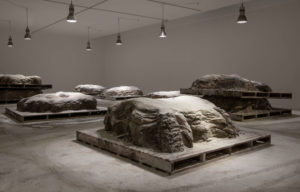 Berlinde De Bruyckere, Aletheia, on-vergeten, 2019
Berlinde De Bruyckere, Aletheia, on-vergeten, 2019
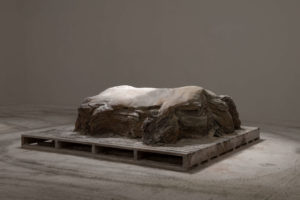 Berlinde De Bruyckere, Aletheia, on-vergeten, 2019
Berlinde De Bruyckere, Aletheia, on-vergeten, 2019
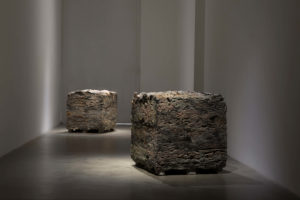 Berlinde De Bruyckere, Nijvel II, 2019 and Nijvel I, 2019
Berlinde De Bruyckere, Nijvel II, 2019 and Nijvel I, 2019
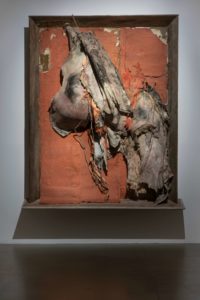 Berlinde De Bruyckere, It almost seemed a lily V, 2018
Berlinde De Bruyckere, It almost seemed a lily V, 2018
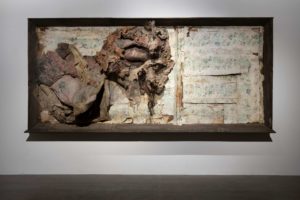 Berlinde De Bruyckere, It almost seemed a lily IV, 2018
Berlinde De Bruyckere, It almost seemed a lily IV, 2018
For all the images: courtesy Fondazione Sandretto Re Rebaudengo
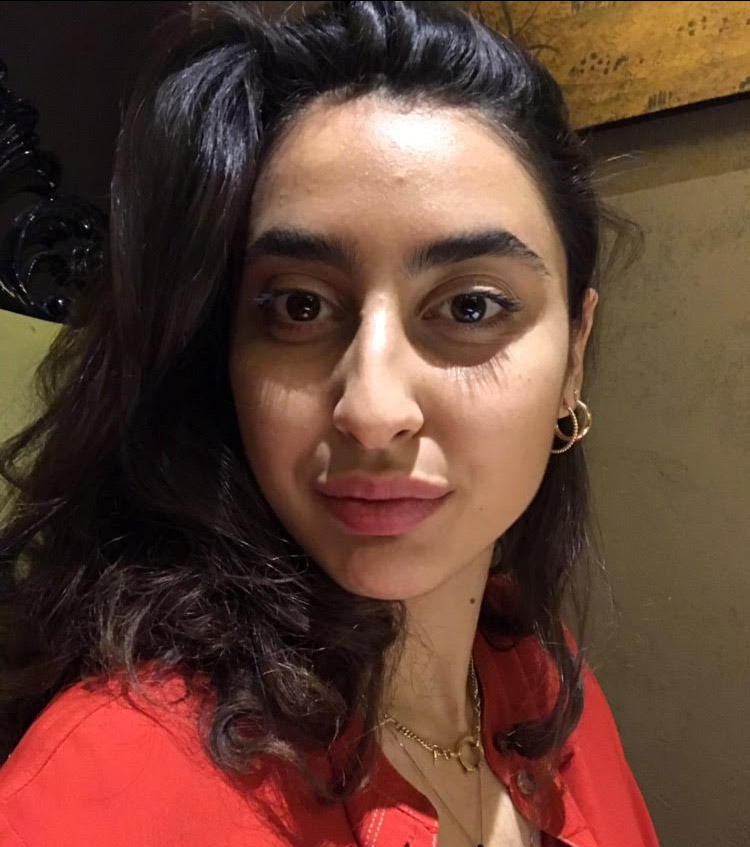
Vanessa Ignoti (1993) graduated from the Fine Arts Academies of Venice and later Milan, respectively in Decoration and Cinema and Video, went through a course of studies and interest from publishing to New Technologies. With experience in the management and organization of exhibitions and art projects, she focuses her interest on communication and theory of art.




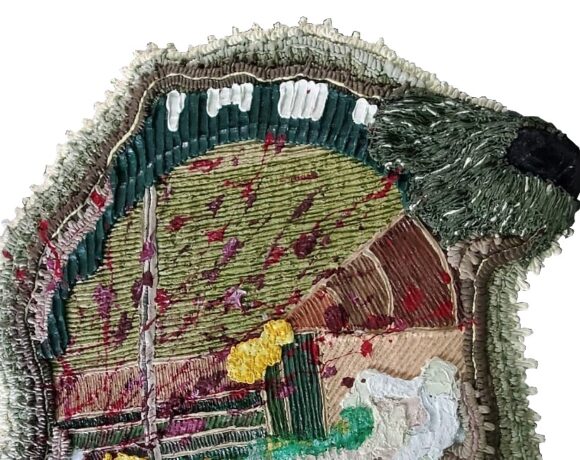

NO COMMENT